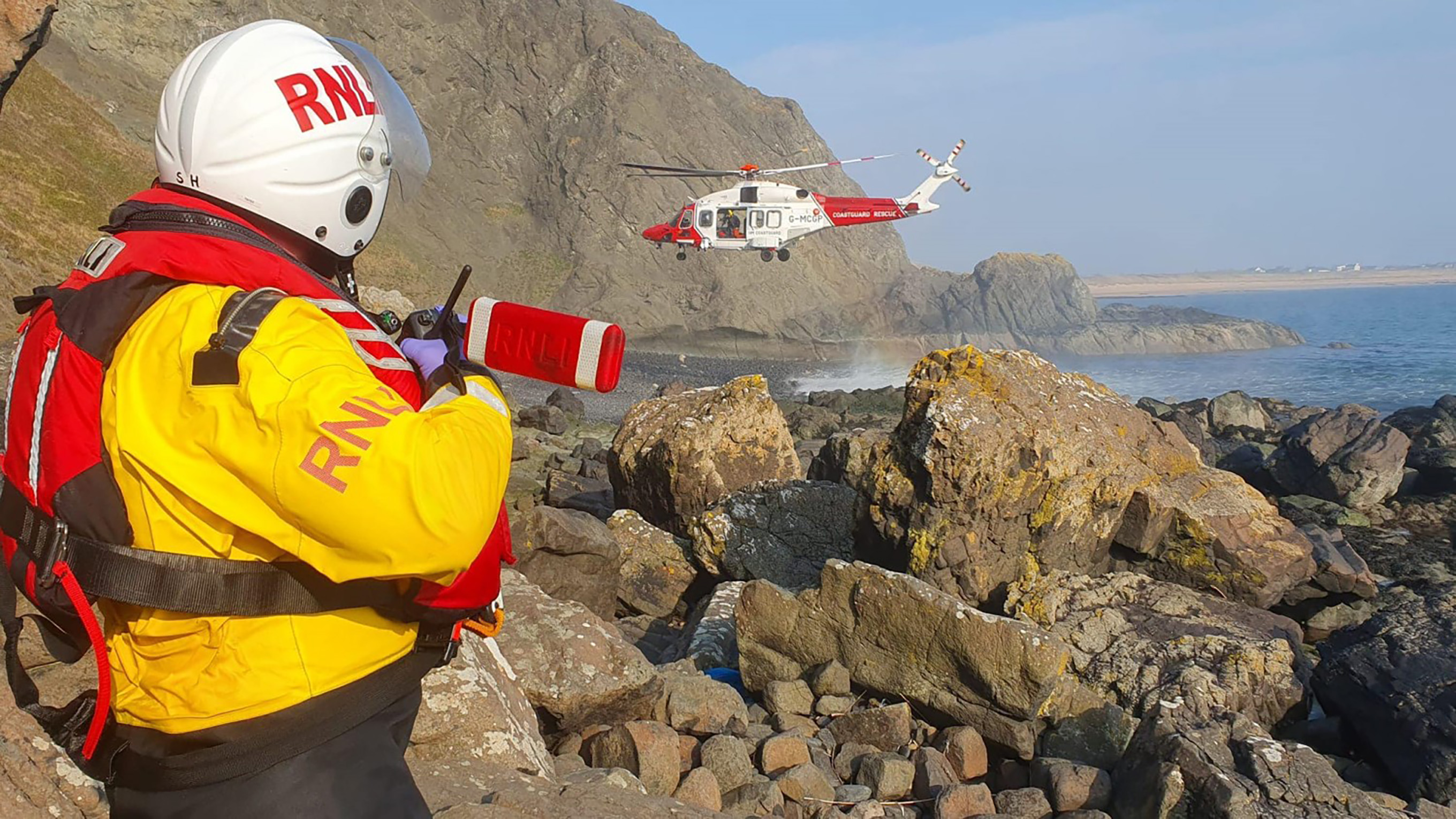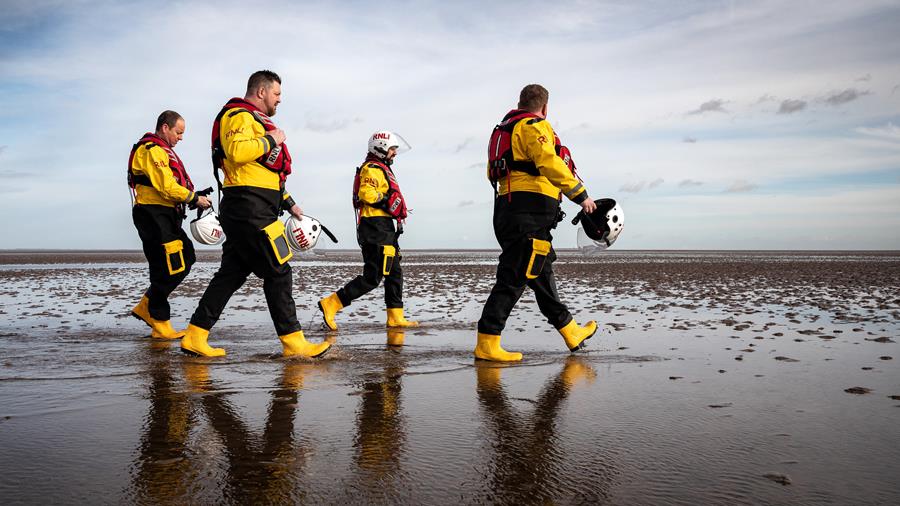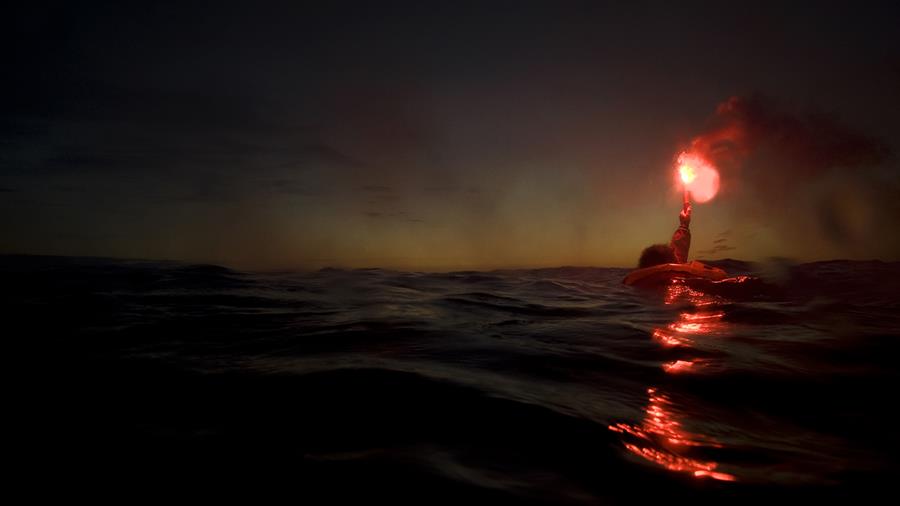

A loose rock and a 5m fall: How one scrambler survived
No matter how experienced you are, things can go wrong, as rock climber Jo found out while scrambling along Fife’s Elie Chainwalk.
The Elie Chainwalk is a scrambler’s delight. This little-known scrambling route near the village of Elie traverses the jagged cliffs below the Fife Coastal Path. There are eight horizontal and vertical chains anchored into the cliff-face, together with foot and handholds, helping you to climb, clamber and crawl across it, with heights and descents of up to 10m.
It’s certainly not for the faint-hearted. Signs at both ends of the challenging 500m route warn of the dangers - becoming trapped by the incoming tide, being struck by falling stones and rock, and falling from steep rock.
An awkward landing
Sunday 9 March 2025 was a dry, bright, sunny day with light winds - perfect conditions for a scramble along the Elie Chainwalk. Experienced boulderer and rock climber Jo Randall set out with a friend, but it wasn’t long before her sense of adventure got the better of her and she veered off the marked route.
‘When I see a piece of rock I think, “Oh, this looks nice!”, and go climbing on it,’ explains Jo. ‘But this time, I pulled a loose piece of rock off and fell about 5 metres.
‘I’m so used to landing feet first. I managed the landing as best as I could, but I landed on rocks that were all over the place and really uneven, which meant when I fell, I kind of went knee and then head.’
Using the chains, Jo’s friend climbed down to the rocky outcrop at the bottom of the cliff where Jo had landed. She was in a lot of pain - her head was bleeding profusely, and she couldn’t move her leg. While stemming the blood the best he could, he called 999 for help and asked for the Coastguard.
Launching the lifeboat
Tam Bett, a volunteer crew member and helm at Anstruther Lifeboat Station, was enjoying a relaxing Sunday afternoon in his garden when his pager sounded.
After racing to the station, Tam and two of his fellow lifeboat volunteers, brothers Stuart and Euan Hoggan, launched their D class lifeboat, which is ideal for rescues close to shore.
Many of the station’s shouts are to people in difficulty at the Elie Chainwalk. Some get cut off by the tide, some twist their ankle, but when some, like Jo, accidentally fall and seriously injure themselves, the urgency steps up a notch.
‘On the way there, we were discussing head injuries, knowing Jo had fallen from height,’ says Tam. ‘We were also thinking about potential spinal injuries. Stuart was going through the casualty care cards, which help us to assess a casualty’s condition. And we were planning what to do when we got there.’
A life-threatening bleed
As they scoured the shoreline at Elie Chainwalk, the lifeboat crew spotted somebody on the rocks waving to them. It took great skill and expertise for Helm Euan to carefully navigate the lifeboat through the jagged rocks to get Tam and Stuart ashore.
‘Jo was lying at the bottom of the rock face, covered in coats to try and keep her warm,’ recalls Tam. ‘Her friend was with her, and two other scramblers who had stopped to help.
‘She’d been moved from where she’d originally landed, which helped us to rule out any serious spinal injuries. She was alert and complaining of pain in her leg. We had to cut open her leggings, and that’s when we realised her knee was actually the main concern, not her head injury - she had a life-threatening bleed.’
Working together, Tam and Stuart bandaged Jo’s leg to try and stem the bleeding. They also gave her oxygen and pain relief to keep her comfortable until the Coastguard rescue helicopter from Prestwick arrived.
A team effort
‘They kept talking to me to reassure me and make sure that I was coherent and knew what was going on,’ recalls Jo. ‘They were super helpful and really friendly, and there was no judgement over my stupidity. I was so uncomfortable lying on those rocks and in so much pain, so for them to take it away was such a relief.’
After landing on the beach just around the corner, paramedics from the Coastguard rescue helicopter worked with Tam and Stuart to assess and treat Jo.
They secured Jo onto a stretcher and got her into position so that she could be winched up into the helicopter and taken to hospital in Glasgow.
Then Tam and Stuart helped Jo’s friend into the lifeboat, put a lifejacket on him, and dropped him at Elie where his car was parked so that he could get to the hospital as quickly as possible.
‘It was an exhausting shout,’ reflects Tam, ‘but we all worked as a team to give Jo the emergency care she needed. It always feels good when you’re able to help someone.’
‘It could have been so much worse’
Over 5 months on and Jo is making a slow and steady recovery.
‘I broke my patella bone and ruptured my patella tendon,’ Jo explains. ‘I had a leg brace on for a while after the accident but now I’ve finally got the full range of motion back in my leg. I also broke my cheek bone, but that didn’t require surgery and healed on its own.
‘I keep replaying the accident in my head over and over again. If I had landed on my back or damaged my neck, it could have been so much worse, so I think I got off pretty lightly with a broken knee and face.’
‘Thank you for being there in my time of need’
‘I can’t express how grateful I am to everyone who helped me, especially Anstruther lifeboat crew. They are volunteers giving up their time to save lives, and I’d do anything to give back what I could so they can keep on going.
‘If it wasn’t for all the generous support they get from people like you, they wouldn’t have been there in my time of need, so I have all of you to thank too.’
‘Please stay safe when enjoying the coast’
Jo gives a word of warning to fellow scramblers and boulderers, and to coastal walkers and runners:
‘Stay on the path, don’t go off-piste and have your wits about you. Even though a rock may look super secure, it could be treacherous and freak accidents can happen.’
Categories
You may also enjoy the following












